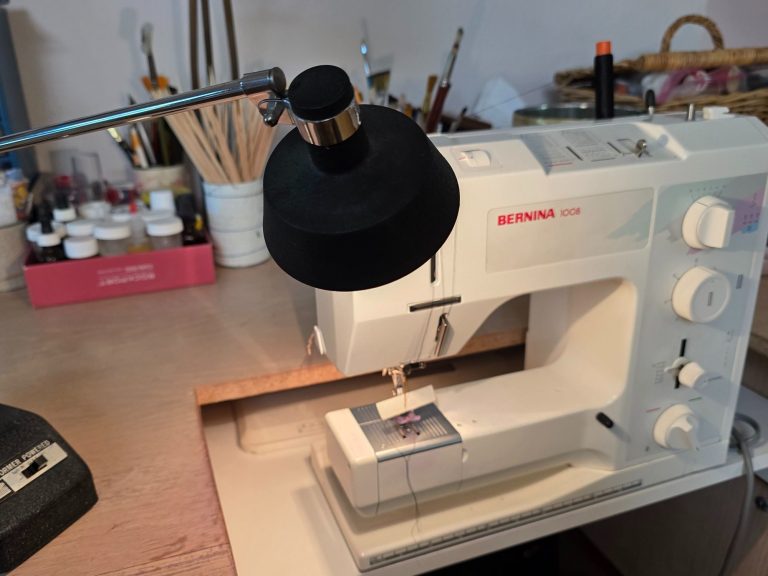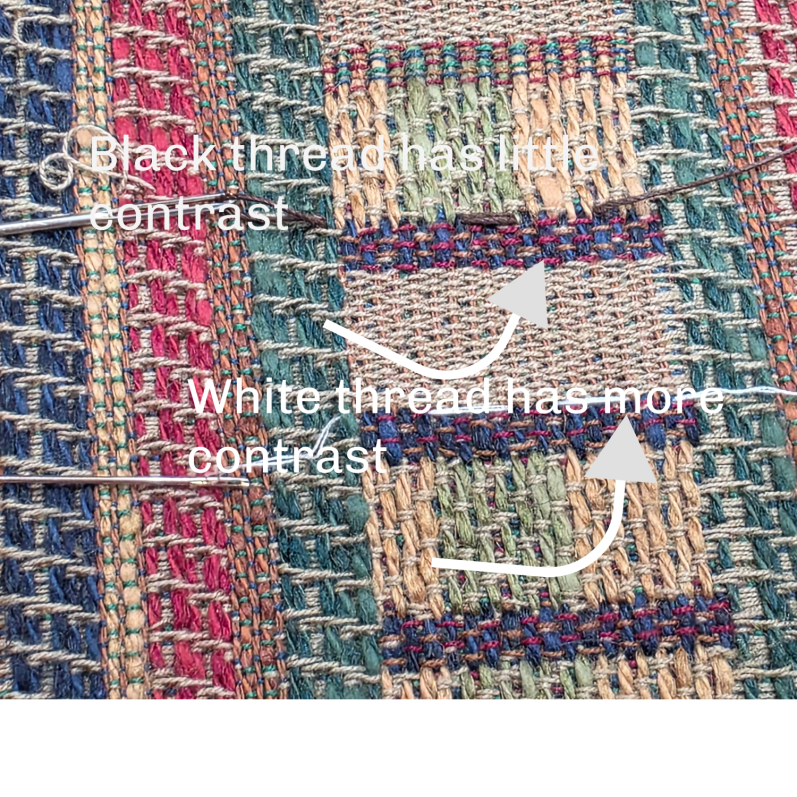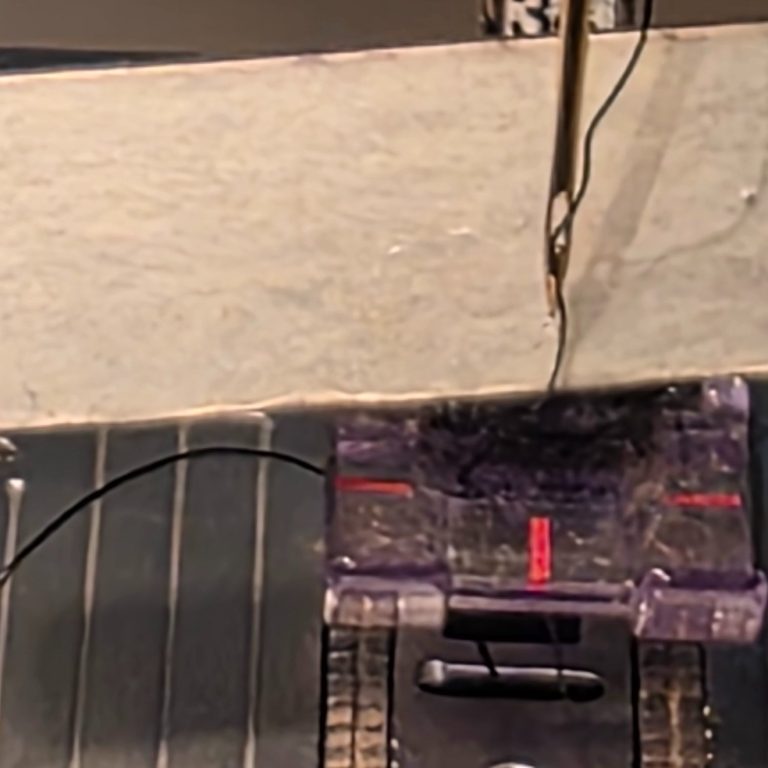When the Fine Print Fades:
Crafting with Age-Related Vision Changes
Crafting Tips for Changing Eyes
1. Embrace the Power of Contrast
Light on dark, dark on light — the higher the contrast, the easier it is to see. I now choose the materials I work with in colors that pop against the background I’m working on. No more navy-on-navy if one can help it!
And here’s a practical gem: threading a sewing machine needle, can become an unexpectedly difficult task because we simply can’t see the tiny hole. A helpful trick? Place a piece of white paper behind the needle. That sudden contrast between the dark metal and bright background makes the needle’s eye pop into view. This works with many small tasks — anytime something seems to "disappear," change what’s behind it.

Let’s be honest — everything changes. Our interests evolve, our hands learn new rhythms, and our eyes… well, sometimes they stop cooperating the way they used to. Along with the many blessings that come in the bundle labeled “aging” (wisdom and confidence...), there are also some unwelcome guests — one of them being age-related macular degeneration (AMD). For some of us, a life-shifter.
Macular degeneration doesn’t announce itself with fanfare. It sneaks in quietly, like a thief. At first, we hardly notice it — the brain is clever and generous, filling in missing visual details so we can carry on reading, sewing, painting, or stitching. But over time, the gaps become bigger, and the brain doesn't have enough information from which to create a patch, the details begin to blur, and what once was crisp becomes a guessing game.
For a creator, this can feel especially discouraging. But take heart — you are not alone, and you don’t have to stop doing what you love.
As a lifelong fellow crafter, I’ve been gathering and practicing little tricks that make a big difference in how I continue to create — even as my eyesight continues to change. Today, I want to pass them along, in case they can help you.


2. Light It Up — Strategically
Overhead lighting is good, but directed light is better. A gooseneck LED lamp aimed right where you need it can make details leap into focus. Bonus points if it’s adjustable in brightness and color temperature.
3. Magnification is Not Cheating
Your cell phone, magnifying lamps, or wearable magnifier glasses can bring clarity back into reach. It’s not a crutch — it’s a tool. I find that my cell phone is an invaluable tool because not only does it magnify, but it has a light. With a little bit of research, reading glasses can be purchased online with a magnification level beyond 3.
4. Declutter Your Workspace
This one surprised me. A messy table makes it harder to find what you're looking for when you can't rely on quick visual scanning. Keeping a tidy, simplified workspace helps reduce visual strain and frustration.


5. Add Markers
When lines or patterns fade into the background, masking tape can be a game-changer. It’s completely removable and easy to reposition. Placing a strip of tape along a seam line or next to an edge can give your eyes something bold and tangible to focus on — especially when precision matters.
6. Change Colors
Traditionally, we’re taught to match, such as black thread on black fabric so the seams vanish. But when one is working with AMD or any kind of visual impairment, that invisibility becomes the enemy. By
using contrasting colors, the detail work becomes much easier to track and correct. Contrast is your friend.
7. Take Eye Breaks
Just like our backs and hands need to stretch, our eyes need rest. The 20-20-20 rule helps: every 20 minutes, look 20 feet away for 20 seconds. It’s a little pause that can make a big difference.
8. Don't be afraid to ask for help or confirmation. Four eyes are tuely better than two.
Vision loss — whether mild or more pronounced — doesn’t mean the end of creativity. It just asks us to adjust the way we process the lens. To find new ways of doing what we love.
If you or someone you know is navigating vision changes while still wanting to remain creative — share this post. Let’s keep the conversation open, the tools shared, and the joy of creating alive, no matter what age or eyesight we’re working with.
Because while everything changes, the rewards that come from living a creative life remains beautifully, stubbornly constant.
Have a Tip or Trick of Your Own? Email me — I’d love to include more ideas in a future post! Let’s support each other and keep the creativity flowing.
